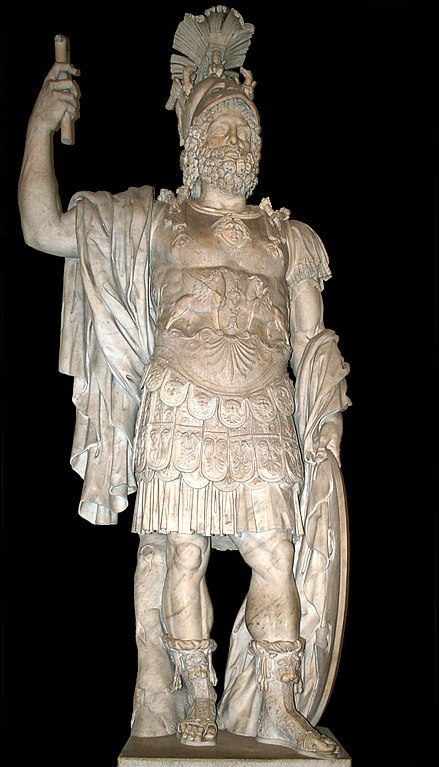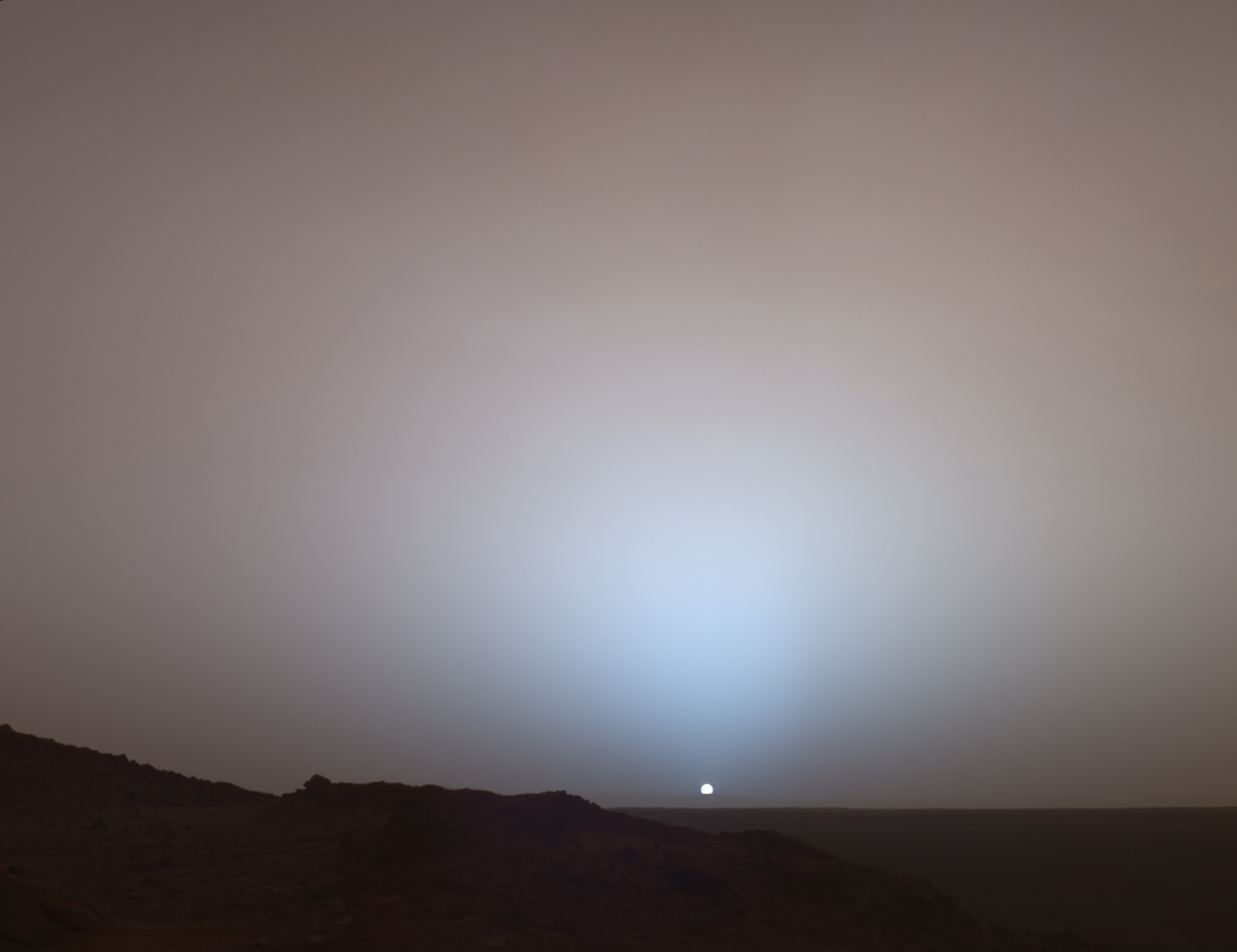
Mars is the fourth planet from the sun and the second smallest planet in the solar system. It was name after the ancient Roman god of war. The ancient Greeks called him Ares. The astronomical symbol for Mars consists of a circle and and an arrow. It is also the symbol for the masculine gender.

Mars has two small moons, Phobos and Deimos.
Mars has a thin atmosphere. The atmospheric pressure on the planet is less 1% of that of the Earth's. Therefore, water evaporates quicker there than on Earth. The atmosphere consists primarily of carbon dioxide. 1.93% of the atmosphere is argon. 1.89% is nitrogen. There exists trace amounts of oxygen and water vapor in the atmosphere. Temperatures range from -226 ºF (-143 ºC) to 95 ºF (35 ºC)
The surface gravity of the planet is 38% of the Earth's. The second highest mountain in the solar system, Olympus Mons, is on this planet. Olympus Mons is also a volcano and is the largest volcano in the solar system. Large amounts of frozen water exist at both poles. Bodies of frozen water are believed to exist beneath the planet's surface. In November 2016, NASA scientists claimed that they had found a large body of underground frozen water beneath Utopia Planitia. They estimate that the amount of water there is equivalent in volume to the amount in Lake Superior. In July 2018, Italian scientists who were working on the European Space Agency's Mars Express mission claimed that they had detected by radar a large pool of underground frozen water near the planet's south pole.
There is a considerable body of scientific evidence which suggests that Mars once had large bodies of surface water. Hematite and goethite form in the presence of water. Jarosite forms only with aid of acidic water. Scientists have detected the presence of all three of these minerals on Mars. The existence of topological features such as deltas and alluvial fans and the discovery of rounded pebbles photographed by the rover, Opportunity, indicate that rivers of water once flowed across the Martian landscape.
The Martian year is almost twice as long as the Earth's and the Martian day is slightly longer than an Earth day. Mars completes one revolution around the sun in 686.971 days. The Martian day lasts 24 hours 39 minutes 35.244 seconds. Astronauts and colonists traveling to Mars would need watches that have been calibrated to accommodate the longer length of the Martian day. The picture at the top of this page, by the way, is a photograph of a sunset on Mars. Mars reaches its furthest distance from the sun at 155,750,000 miles (249.2 million kilometers). It is at its closest distance from the sun at 129,187,500 miles (206.7 million kilometers) from the sun. Having an elliptical orbit, Mars has seasons, but they last almost twice as long as on Earth.
Elon Musk (the CEO of Tesla) and Mars One (a Dutch non-profit organization) want to colonize Mars. Because of the advancements in modern technology, it is reasonable to believe that their dreams will one day be realized.

